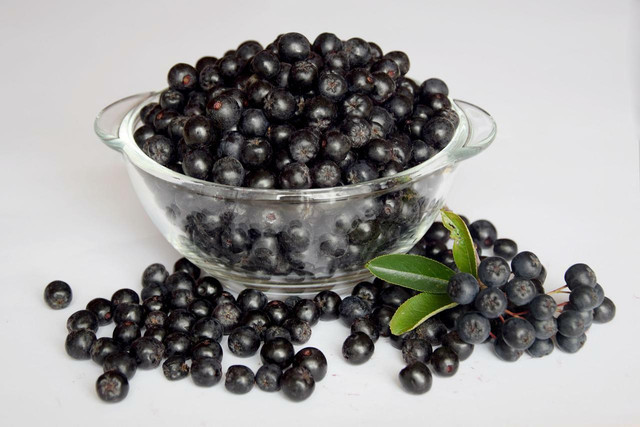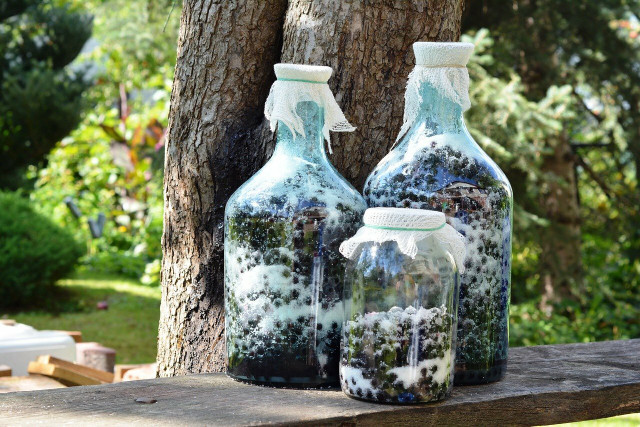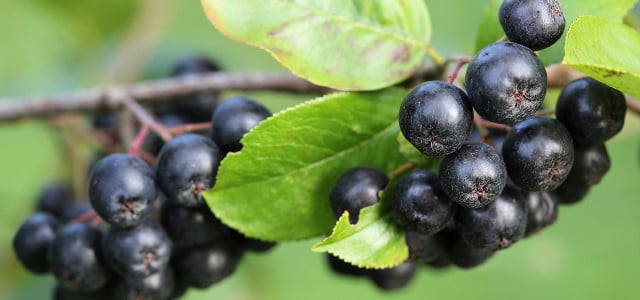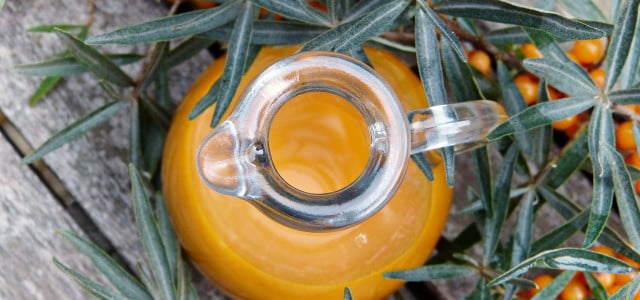Introducing America's most underappreciated native superfood, the aronia berry. Read on for aronia berry benefits, plant care, and uses for this mouth-puckering fruit.
Surprised that you’ve never seen or heard of this wonderberry before? Though the aronia is native to Eastern North America, it’s most widely cultivated for fruit in Europe. In the USA it’s also known as the chokeberry (not to be confused with the chockecherry) for its extreme tartness and is usually only grown ornamentally.
Fortunately, aronia berry benefits can start right in the garden. The shrub is not particularly high maintenance and can grow nearly anywhere provided that the soil is moist enough. It can be grown in full sun, or in the partial shade under trees or near buildings.
A great choice for native gardening for wildlife, aronia’s attractive blossoms are great flowers for native bees, while the berries can provide food for birds, rabbits, or deer. While masses of black berries add interest in the summer, the foliage also turns a festive shade of orange in the autumn.
Aronia Berry Health Benefits



(Foto: CC0 / Pixabay / honka13)
The fact that aronia is so popular in Europe despite its tartness is testament to this fruit’s unique flavor and health benefits. It even tastes like a superfood! The aronia’s tart taste is attributed to its high amount of tannins — the same compounds that give bitterness and body to red wine and black tea.
In fact, the flavor is often compared to an earthy, dry red wine or tart apple that will dry your mouth out when eaten raw. If this deep taste doesn’t inspire some interest, then consider the aronia berry’s health benefits:
- They are nutrient dense and good sources of vitamin C, vitamin K, Manganese, and fiber.
- They are higher in antioxidants (polyphenols, anthocyanins, flavanols) than most other berries.
- They can reduce inflammation, bacterial activity, and cancer cell growth.
- They can improve heart health by reducing high blood pressure and clotting associated with metabolic syndrome.
How to Harvest and Use Aronia Berries



(Foto: CC0 / Pixabay / MrGajowy3)
The first step in reaping those aronia berry benefits is to find a tree. Though they do grow wild, aronia is also cultivated ornamentally, so keep an eye out. The black berries can be identified by their distinctive button-like calyx (the bottom of the fruit). The berries are about the size of blueberries, but hard and resemble miniature red-fleshed apples when cut.
Though all aronia berries are tart, they will be more palatable when fully ripe. Although aronia may turn black as early as August, they will peak in flavor about a month later and can remain viable on the branch all Autumn.
Due to its strong flavor, aronia is rarely eaten raw. Here are some ideas for how you might use your aronia:
- Juice fresh berries, add them to smoothies or lemonades, or freeze into juice pops
- Cook the berries until tender and add to parfaits, yogurt, nice creams, or a topping for desserts
- Make jam, jelly, or a concentrated syrup to flavor drinks, desserts, or summer spritz cocktails
- Bake them into pies, cakes or pastries: their flavor works great as an accent
- Infuse them in vodka for a flavored liqueur, make wine, or use them in kombucha cocktails
- Use them in savory recipes, such as salsa, chutney, or a BBQ glaze
Aronia Berries: Things to Consider



(Foto: CC0 / Pixabay / utroja0)
Aronia’s high tannin content means that it pest resistant, has a long shelf life, and is safe to consume without side-effects other than possible constipation. So what is the catch? This berry’s one flaw (and often strength) is its tart flavor, which may not be for everyone regardless of how it is used. While it can add complexity to other dishes, care should be taken not to add too much aronia to overpower a dish.
There is also the issue of availability; given that it isn’t widely produced in the USA, aronia will likely only be found in juice or supplement form in health food stores, European groceries, or online (aronia berry powder available on Amazon**).
Read more:
- How to Find, Collect, and Use Elderberries
- Growing Goji Berries: Your Own Superfood Supply
- Edible Weeds: 9 Common Weeds You Can Eat
Important Information regarding Health-related Topics.
** Links to retailers marked with ** or underlined orange are partially partner links: If you buy here, you actively support Utopia.org, because we will receive a small part of the sales proceeds. More info.Do you like this post?








